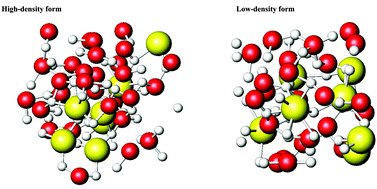Structural studies and polymorphism in amorphous solids and liquids at high pressure
Abstract
When amorphous materials are compressed their structures are expected to change in response to densification. In some cases, the changes in amorphous structure can be discontinuous and they can even have the character of first-order phase transitions. This is a phenomenon referred to as polyamorphism. Most evidence for polyamorphic transitions between low and high density liquids or analogous transformations between amorphous forms of the same substance to date has been indirect and based on the changes in thermodynamic and other structure-related properties with pressure. Recent studies using advanced X-ray and neutron scattering methods combined with molecular dynamics simulations are now revealing the details of structural changes in polyamorphic systems as a function of pressure. Various “two state” or “two species” models are used to understand the anomalous densification behaviour of liquids with melting curve maxima or regions of negative melting slope. Thermodynamic analysis of the two state model leads to the possibility of low- to high-density liquid transitions caused by differences in bulk thermodynamic properties between different amorphous forms and on the degree of cooperativity between low- and high-density structural configurations. The potential occurrence of first-order transitions between supercooled liquids is identified as a critical-like phenomenon. In this tutorial review we discuss the background to polyamorphism, incorporating the experimental observations, simulation studies and the two-state models. We also describe work carried on several systems that are considered to be polyamorphic.

- This article is part of the themed collection: High Pressure Science

 Please wait while we load your content...
Please wait while we load your content...